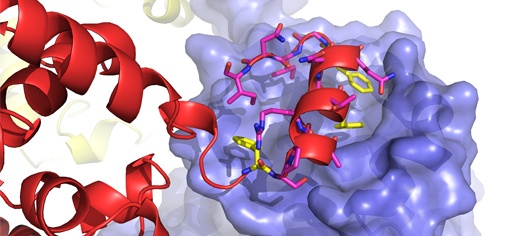
Image: Schmallenberg virus
A group of drugs already in everyday use to treat psychosis or depression may also be used to defeat deadly and emerging viruses.
Researchers from the University of Leeds found that common drugs in everyday use were successful in preventing a particular virus from infecting cells, by blocking the ion channels that regulate potassium levels in those cells.
Ion channels normally control the balance of chemicals such as potassium, calcium and sodium within our cells.
The virus the research focused on was the Bunyavirus family, which includes lethal human pathogens such as Hantaviruses and Crimean-Congo haemorrhagic fever virus, a widespread disease that is becoming more prevalent in Mediterranean countries and endemic in Africa, the Middle East and some Asian countries, where outbreaks can kill up to four out of 10 people* who contract it.
They found that drugs that inhibit potassium ion channels were effective against Bunyamwera virus, which is a model for all of the bunyaviruses.
Adding drugs that specifically block the ion channels that regulate potassium levels blocked the ability of all of the bunyaviruses tested to infect cells, but did not have any effect on unrelated viruses.
The viruses tested included Hazara virus, used as a model for CCHFV, and Schmallenberg virus, which causes deformities and neurological defects in unborn lambs and calves.
The common drugs used in the research included the anti-psychotic haloperidol, the anti-depressant fluoxetine, and a local anaesthetic, bupivacaine.
Dr Jamel Mankouri, of the School of Molecular and Cellular Biology at the University of Leeds, said: “This is a breakthrough finding since bunyaviruses are considered as emerging pathogens with the potential to establish a global disease range with massive importance in healthcare, animal welfare and economics.
“Being able to block these ion channels is an important first step in understanding how we can stop these viruses spreading and causing human disease.”
“We observed that these viruses are highly dependent upon the gradient of potassium that exists across the membranes of the cells.”
The study, involving researchers from the universities of Leeds, Nottingham and Glasgow, has been published in the latest edition of the Journal of Biological Chemistry.
Academics used a live virus system to directly compare how different viruses were affected by each drug.
The virus usually kills cells in our system after five days, but the study showed that the presence of protective drug compounds led to cells surviving beyond the five-day period.
By using drugs targeting specific sub-sets of potassium ion channels, they found that Bunyamwera virus and Schmallenberg virus responded differently.
This suggests that while the bunyaviruses are generally manipulating potassium ion channels to survive in cells, it is likely that each virus targets a specific type or group of channels to make a favourable environment to grow.
Dr John Barr, who helped develop the idea at Leeds, added: “Very few new antiviral drugs have made it into clinical use in the last 15 years. One of the main reasons is cost; these are very expensive drugs to develop.
“Taking a drug that has already been proven to be safe, and using it to target a different condition or infection – a process known as drug repurposing – bypasses this expensive and time-consuming stage.
“There are many drugs targeting ion channels that are currently in use for a wide range of conditions. Our work shows that some of these might be suitable to treat virus infections.”
Further information
Dr Jamel Mankouri and Dr John Barr are available for interview. Contact Ben Jones in the University of Leeds press office on 0113 343 8059 or email B.P.Jones@leeds.ac.uk
The paper, Modulation of Potassium Channels Inhibits Bunyavirus Infection, is published in the Journal of Biological Chemistry.
*World Health Organisation findings